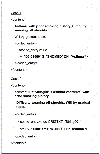The HL7 Clinical Document Architecture
- PMID: 11687563
- PMCID: PMC130066
- DOI: 10.1136/jamia.2001.0080552
The HL7 Clinical Document Architecture
Abstract
Many people know of Health Level 7 (HL7) as an organization that creates health care messaging standards. Health Level 7 is also developing standards for the representation of clinical documents (such as discharge summaries and progress notes). These document standards make up the HL7 Clinical Document Architecture (CDA). The HL7 CDA Framework, release 1.0, became an ANSI-approved HL7 standard in November 2000. This article presents the approach and objectives of the CDA, along with a technical overview of the standard. The CDA is a document markup standard that specifies the structure and semantics of clinical documents. A CDA document is a defined and complete information object that can include text, images, sounds, and other multimedia content. The document can be sent inside an HL7 message and can exist independently, outside a transferring message. The first release of the standard has attempted to fill an important gap by addressing common and largely narrative clinical notes. It deliberately leaves out certain advanced and complex semantics, both to foster broad implementation and to give time for these complex semantics to be fleshed out within HL7. Being a part of the emerging HL7 version 3 family of standards, the CDA derives its semantic content from the shared HL7 Reference Information Model and is implemented in Extensible Markup Language. The HL7 mission is to develop standards that enable semantic interoperability across all platforms. The HL7 version 3 family of standards, including the CDA, are moving us closer to the realization of this vision.
Figures



References
-
- Health Level 7. HL7 Web site. Available at: http://www.hl7.org. Accessed Oct 12, 2001.
-
- Beeler GW Jr. Taking HL7 to the next level. MD Comput. 1999;16(2):21–4. - PubMed
-
- Dolin RH. Advances in data exchange for the clinical laboratory. Clin Lab Med. 1999:19(2);385–419. - PubMed
-
- Alschuler L, Dolin RH, Boyer S, Beebe C (eds). HL7 Clinical Document Architecture Framework, Release 1.0. ANSI-approved HL7 Standard, Nov 2000. Ann Arbor, Mich.: Health Level Seven, Inc., 2000.
MeSH terms
LinkOut - more resources
Full Text Sources
Other Literature Sources
Miscellaneous

